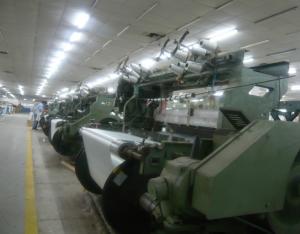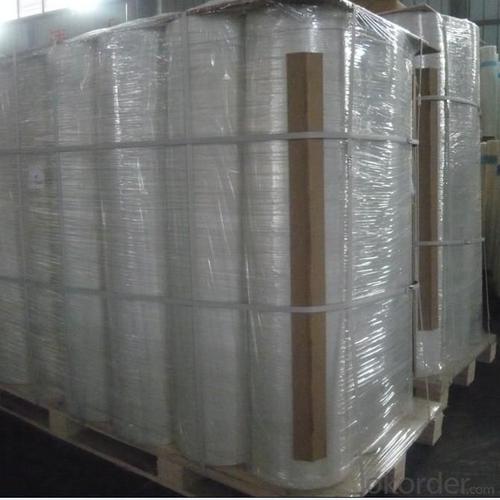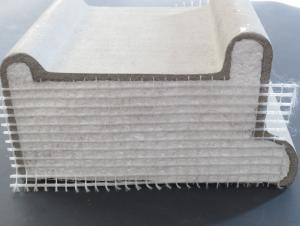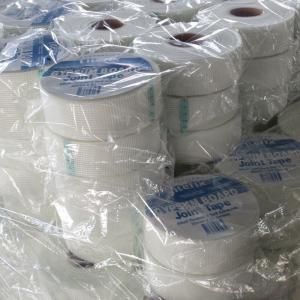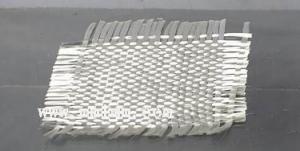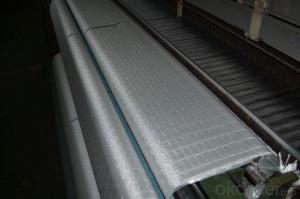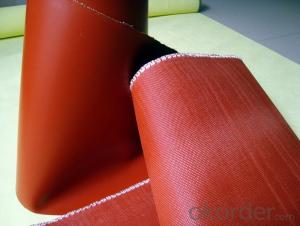Multi-Axial Fiberglass Fabrics Manufacturing
- Loading Port:
- Shanghai Port
- Payment Terms:
- TT or LC
- Min Order Qty:
- 10000 M2 m²
- Supply Capability:
- 50000000 M2 Per Year m²/month
OKorder Service Pledge
OKorder Financial Service
You Might Also Like
Introduction of Multi-axial Fiberglass Fabric:
E-Glass multiaxial fiberglass fabric is made of e-glass direct roving parallel aligned in 0º, 90º, +45º, -45º, then stitched with or without a layer of chopped strand mat.
Each layer is typically oriented in one of four directions; Standard configurations offered by multiaxial fabric suppliers include biaxial(0º, 90º), double bias(+45º, -45º), triaxial.
Fiberglass Biaxial Fabric for hand lay-up process Glass fiber Multiaxial Fabric warp(0º, +45º, -45º), triaxial weft(90º, +45º, -45º) and four axial (0º, 90º, +45º, -45º).
It’s compatible with UP, Vinyl Ester and Epoxy etc, used in GRP pultrusion process, hand lay-up process and RTM process etc, out-made products include GRP boats, automobile parts, wind energy bl E-ades etc.
Advantages of Multi-axial Fiberglass Fabric:
Mechanical property of different directions is adjustable.
The multi-layers structure could simplify forming process, improve operation efficiency.
Quickly wet-out, good molding property, easily to delete air bubbles.
Specification of Multi-axial Fiberglass Fabric:
Specs | 0ºg/m2 | 90º | +45º | -45º | Mat | Total Weight |
| EMF400/800(0º, 90º) | 400 | 400 | 400 | 1200 | ||
| EMF1200(0º, +45º, -45º) | 400 | 400 | 400 | 1200 | ||
| EMF800(0º, 90º, +45º, -45º) | 200 | 200 | 200 | 200 | 800 | |
| EMF450/800(0º, 90º, +45º, -45º) | 200 | 200 | 200 | 200 | 450 | 1250 |
Packing of Multi-axial Fiberglass Fabric:
Each roll is packed in a polyethylene bag inside, then outside with a cardboard box, then on pallet.
Storage of Multi-axial Fiberglass Fabric
In dry and cool places. The best condition is with temperature between 15°C and 35°C, with a relative humidity between 30% and 70%. Before use, please keep it in original package

- Q: Can fiberglass fabric be used for reinforcement in plastic parts?
- Yes, fiberglass fabric can be used for reinforcement in plastic parts. Fiberglass fabric is known for its high strength and durability, making it an ideal choice for reinforcing plastic components. When the fabric is embedded in plastic material, it adds strength, rigidity, and resistance to deformation. This reinforcement is particularly useful in applications where the plastic part needs to withstand heavy loads, impacts, or extreme temperatures. Additionally, fiberglass fabric can also improve the dimensional stability of plastic parts, reducing the risk of warping or distortion. Overall, fiberglass fabric is widely used in various industries to enhance the mechanical properties and performance of plastic parts.
- Q: Is fiberglass fabric suitable for high-stress applications?
- High-stress applications are typically not suitable for fiberglass fabric. Despite its reputation for strength and durability, fiberglass may not be able to endure the intense pressures and loads found in high-stress environments. Instead, fiberglass fabric is commonly employed in applications that call for moderate strength and resistance to heat, chemicals, and electricity. Nonetheless, in high-stress scenarios where materials must withstand extreme forces and pressure, alternative materials like carbon fiber or Kevlar are more frequently utilized. These materials provide superior tensile strength and improved impact resistance, rendering them more appropriate for high-stress applications in industries such as aerospace, automotive, and construction.
- Q: Can fiberglass fabric be used for making tents?
- Tents can indeed be made using fiberglass fabric. When it comes to constructing tents, fiberglass fabric is a favored option due to its remarkable durability, strength, and resistance to damage. Despite its lightweight nature, it offers exceptional protection against various elements, including wind, rain, and harmful UV rays. Moreover, the fiberglass fabric is fire-resistant and can retain its structural integrity even in extreme temperatures. Furthermore, it is user-friendly and can be effortlessly sewn or welded together to form tent panels. Considering all these exceptional qualities, fiberglass fabric proves to be a trustworthy material for crafting top-notch, enduring tents.
- Q: Can fiberglass fabric be used for reinforcement in oil processing tanks?
- Yes, fiberglass fabric can be used for reinforcement in oil processing tanks. Fiberglass fabric is known for its high strength-to-weight ratio, corrosion resistance, and durability, making it an ideal material for reinforcing structures in harsh environments such as oil processing tanks. The fabric can be applied to the tanks either by wet lay-up or vacuum infusion process, ensuring proper adhesion and integration with the tank structure. Additionally, fiberglass fabric is non-conductive and non-magnetic, which makes it suitable for use in tanks containing flammable or sensitive materials. Overall, fiberglass fabric offers a cost-effective and reliable solution for reinforcing oil processing tanks.
- Q: Can fiberglass fabric be used for insulation in industrial equipment?
- Fiberglass fabric proves to be a suitable option for insulating industrial equipment, given its various qualities. Its versatility and exceptional thermal insulation properties make it an ideal material. Not only is it lightweight, but it is also non-combustible and resistant to heat, chemicals, and moisture. These characteristics make it highly suitable for insulating industrial equipment including boilers, furnaces, tanks, and pipes. By effectively minimizing heat transfer, it successfully reduces energy loss and ensures stable temperatures during industrial processes. Moreover, its installation is effortless, it is highly durable, and it boasts a long lifespan, thereby making it a cost-effective solution for insulation in industrial applications.
- Q: Can fiberglass fabric be used for insulation in construction projects?
- Yes, fiberglass fabric can be used for insulation in construction projects. Fiberglass fabric is made from woven glass fibers, which have excellent thermal insulation properties. It is commonly used as an insulation material in walls, roofs, and floors to prevent heat transfer and improve energy efficiency in buildings. The fabric is lightweight, flexible, and easy to install, making it a popular choice for construction projects. Additionally, fiberglass fabric is resistant to fire, moisture, and chemicals, making it a durable and long-lasting insulation material.
- Q: Can fiberglass fabric be used for insulation in food processing plants?
- Yes, fiberglass fabric can be used for insulation in food processing plants. It is a commonly used material due to its heat resistance, durability, and ability to provide thermal insulation. Additionally, fiberglass fabric is non-toxic, non-absorbent, and can withstand high temperatures, making it suitable for use in food processing environments.
- Q: How does fiberglass fabric perform in flexural strength?
- Fiberglass fabric generally exhibits excellent flexural strength due to its inherent properties, such as high tensile strength and rigidity. It can withstand bending or flexing without significant deformation or failure, making it a suitable material for applications that require structural integrity and resistance to bending forces.
- Q: How does fiberglass fabric perform in durability?
- Renowned for its outstanding durability, fiberglass fabric is highly regarded. It boasts exceptional strength and resistance to wear and tear due to its composition of woven glass fibers. Its shape remains intact over time as it is not easily deformed or stretched. Moreover, fiberglass fabric displays remarkable resistance to chemical and environmental factors, including moisture, UV radiation, and extreme temperatures. These qualities render it suitable for diverse applications in industries such as automotive, aerospace, marine, and construction. Furthermore, fiberglass fabric's durability is further amplified by its low maintenance needs and long lifespan, making it a cost-effective and dependable option for a multitude of projects.
- Q: Is fiberglass fabric suitable for use in food packaging?
- Fiberglass fabric is not a suitable option for food packaging, as it can potentially contaminate the food due to the tiny glass fibers that it is composed of. Ingesting these fibers may pose health risks. Furthermore, it is essential to note that fiberglass fabric is not intended to be used for food contact and may not meet the required standards for packaging materials. To guarantee the safety and quality of the packaged food, it is crucial to select packaging materials that are explicitly designed and approved for food contact.
1. Manufacturer Overview
| Location | Shandong, China |
| Year Established | 2002 |
| Annual Output Value | Below US$1 Million |
| Main Markets | North America; South America; Eastern Europe; Southeast Asia; Africa; Oceania; Mid East; Eastern Asia; Western Europe; Central America; Northern Europe; Southern Europe; South Asia |
| Company Certifications | ISO 9001:2000 |
2. Manufacturer Certificates
| a) Certification Name | |
| Range | |
| Reference | |
| Validity Period |
3. Manufacturer Capability
| a) Trade Capacity | |
| Nearest Port | Qingdao Port |
| Export Percentage | 81% - 90% |
| No.of Employees in Trade Department | Above 10 People |
| Language Spoken: | English; Chinese; |
| b) Factory Information | |
| Factory Size: | Above 10,000 square meters |
| No. of Production Lines | Above 10 |
| Contract Manufacturing | Design Service Offered; Buyer Label Offered |
| Product Price Range | High; Average |
Send your message to us
Multi-Axial Fiberglass Fabrics Manufacturing
- Loading Port:
- Shanghai Port
- Payment Terms:
- TT or LC
- Min Order Qty:
- 10000 M2 m²
- Supply Capability:
- 50000000 M2 Per Year m²/month
OKorder Service Pledge
OKorder Financial Service
Similar products
Hot products
Hot Searches
Related keywords

